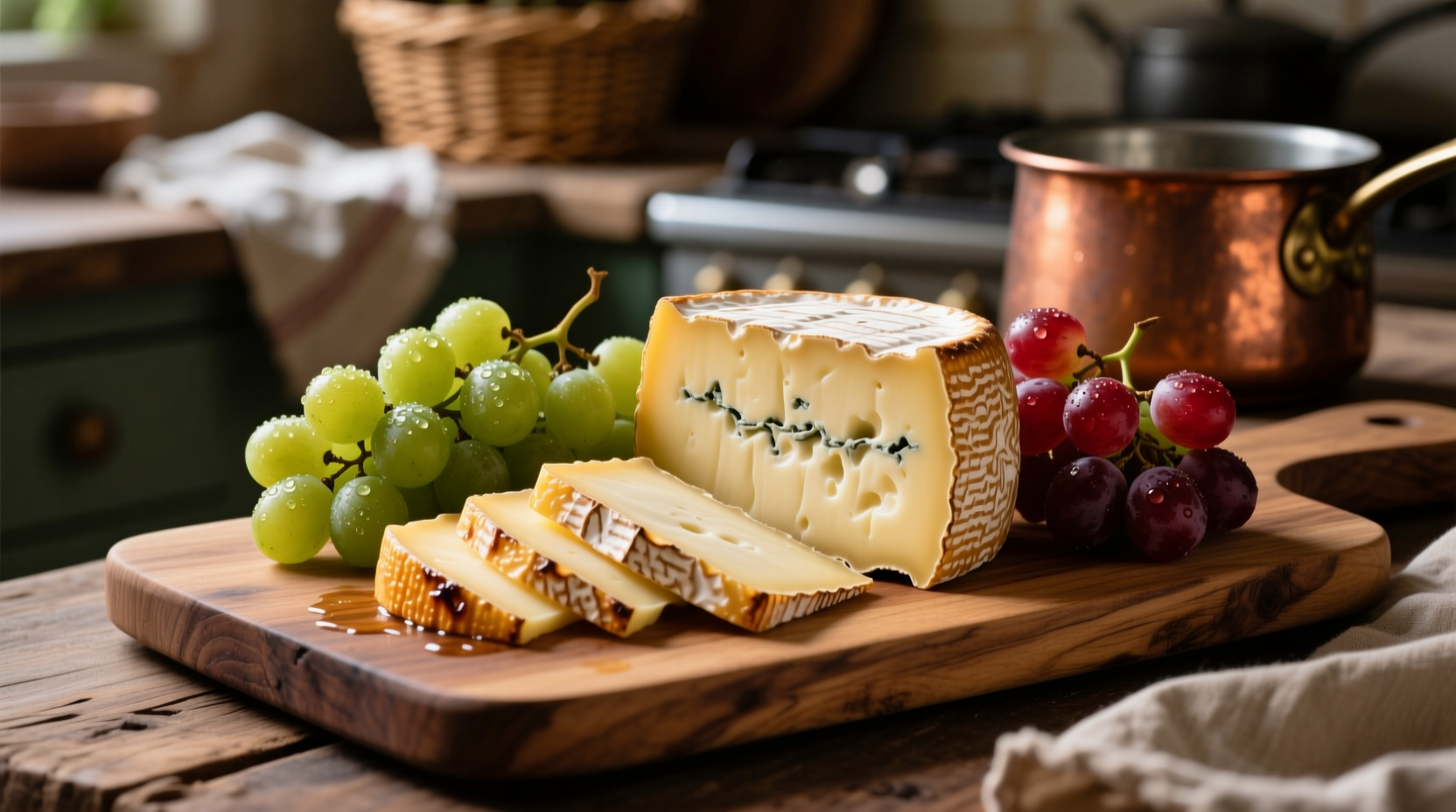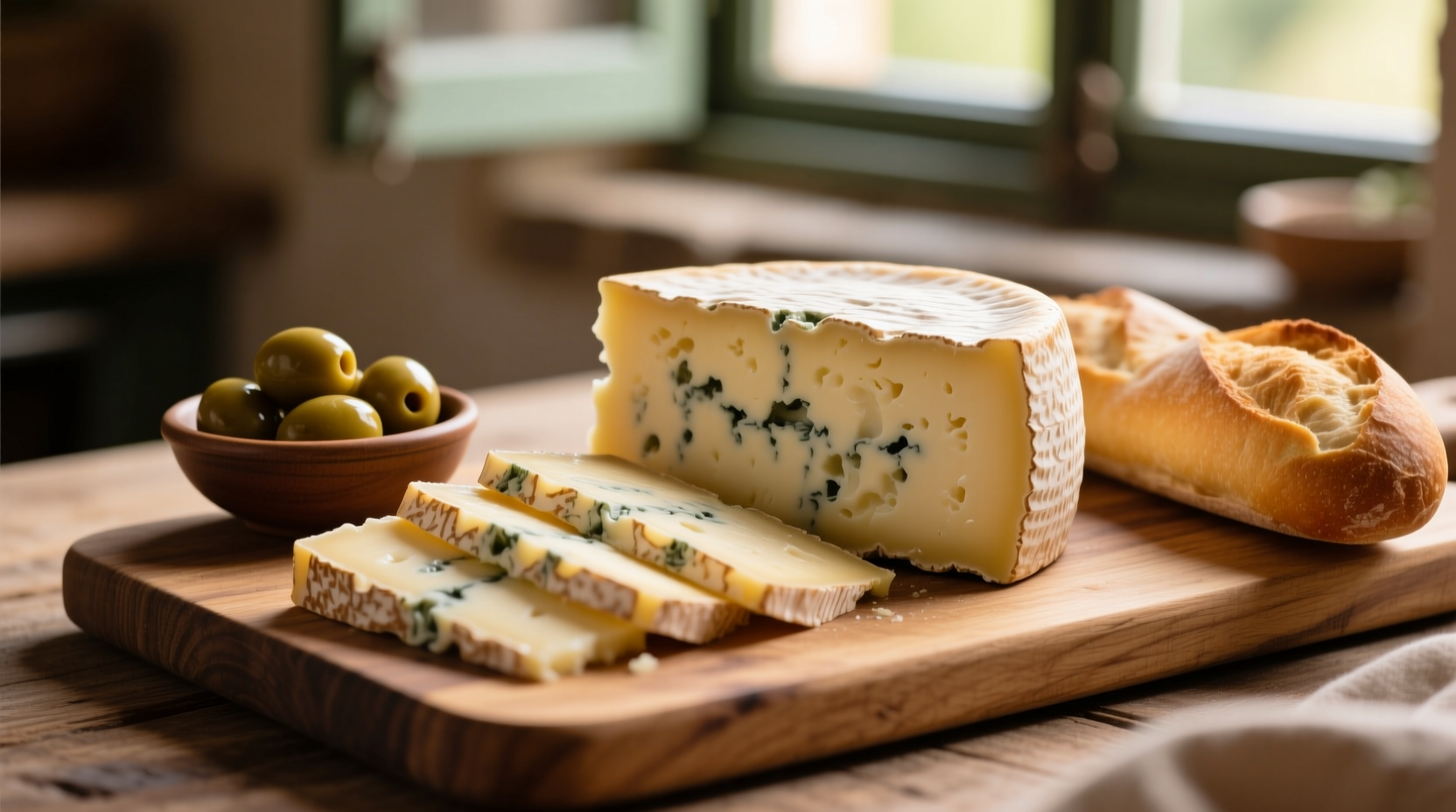Provolone cheese offers a mild, buttery flavor when young (dolce), evolving into a sharper, tangier, and slightly smoky profile as it ages (piccante). Its smooth, semi-soft texture melts beautifully, making it ideal for sandwiches, baked dishes, and charcuterie boards.
Ever wonder what does provolone cheese taste like when you're standing in the dairy aisle? You're not alone. This Italian classic confuses many shoppers who can't decide between its mild and sharp varieties. As a cheese that bridges the gap between mozzarella's subtlety and cheddar's boldness, understanding provolone's flavor journey is essential for making the right culinary choice.
The Flavor Spectrum of Provolone: From Dolce to Piccante
Provolone isn't a one-note cheese—it transforms dramatically based on aging. This Italian semi-hard cheese starts life as provolone dolce (sweet provolone), aged just 2-3 months, offering a gentle, milky flavor with subtle buttery notes. As it matures into provolone piccante (sharp provolone) over 4 months to over a year, it develops complex nutty, tangy characteristics with occasional smoky undertones.
"Provolone's flavor evolution mirrors its traditional production method," explains Sophie Dubois, our culinary expert. "The aging process allows enzymes to break down proteins and fats, creating those distinctive sharp notes you experience in older varieties. This transformation is why provolone works equally well in a delicate caprese salad or a hearty baked ziti."
How Aging Transforms Provolone's Taste Profile
Unlike many cheeses that follow a simple mild-to-strong progression, provolone's flavor development has distinct stages:
| Aging Period | Flavor Characteristics | Texture | Ideal Culinary Uses |
|---|---|---|---|
| 2-3 months (Dolce) | Mild, buttery, slightly sweet | Smooth, elastic, easy to slice | Cold sandwiches, fresh salads, pizza |
| 4-6 months | Noticeable tang, developing nuttiness | Firmer but still pliable | Paninis, grilled cheese, pasta bakes |
| 8-12 months (Piccante) | Sharp, complex, occasional smokiness | Dense, slightly crumbly | Charcuterie boards, robust sauces, standalone enjoyment |
| 12+ months (Aged) | Intensely sharp, crystalline, pronounced umami | Firm, crystalline structure | Grating over pasta, cheese boards, flavor enhancement |
Provolone vs. Other Popular Cheeses: Flavor Comparison
Understanding what does provolone cheese taste like requires context against similar cheeses. While often confused with mozzarella due to their shared pasta filata (stretched curd) production method, provolone offers a more complex flavor profile:
- Provolone vs. Mozzarella: Mozzarella delivers pure milky freshness with minimal aging, while provolone develops noticeable tang and complexity as it matures
- Provolone vs. Cheddar: Cheddar offers sharper, more acidic notes with earthy undertones, while provolone maintains a smoother, creamier profile even when aged
- Provolone vs. Swiss: Swiss cheese features distinctive nuttiness from propionic fermentation, whereas provolone's nuttiness emerges gradually through aging
- Provolone vs. Monterey Jack: Monterey Jack remains consistently mild, while provolone's flavor evolves dramatically with age

When Provolone Shines: Culinary Applications Based on Flavor
Knowing what does provolone cheese taste like helps you leverage its strengths in specific dishes. The cheese's exceptional melting properties combined with its flavor profile make it versatile:
Ideal Uses for Mild Provolone (Dolce)
- Sandwiches: Its smooth melt creates that perfect cheese pull in cold cut sandwiches without overwhelming other ingredients
- Pizza: Blends beautifully with mozzarella for a more complex dairy base that doesn't dominate toppings
- Salads: Sliced thin over arugula or in caprese variations adds creamy richness without sharpness
Ideal Uses for Aged Provolone (Piccante)
- Baked Dishes: Holds its flavor through cooking in recipes like baked ziti or chicken cacciatore
- Charcuterie Boards: Pairs beautifully with cured meats, especially when accompanied by honey or fruit preserves
- Sauces: Adds depth to cheese sauces without the waxiness sometimes found in aged cheddars
Context Matters: When Not to Use Provolone
Despite its versatility, provolone isn't perfect for every application. Understanding what does provolone cheese taste like reveals its limitations:
- Fresh cheese applications: Its aging process means it lacks the bright acidity of fresh cheeses like ricotta or goat cheese
- Very delicate dishes: Sharp provolone can overpower subtle flavors in light seafood preparations
- Long-term storage: Unlike harder cheeses, provolone doesn't age well beyond 12-18 months at home
According to USDA dairy guidelines, proper storage significantly impacts provolone's flavor development. Keeping it wrapped in wax paper inside a vegetable drawer maintains optimal humidity levels for controlled aging. USDA Food Safety and Inspection Service recommends consuming opened provolone within 3-4 weeks for best flavor.
Provolone in Global Cuisine: Beyond Italian Borders
While originating in southern Italy, provolone's flavor profile has found international applications. In Wisconsin—a major U.S. producer—the cheese often develops slightly different characteristics due to regional milk variations. American provolone tends to be milder than its Italian counterpart, making it particularly popular in Midwestern cooking.
The USDA Agricultural Research Service has documented how soil composition and cow feed affect milk composition, which in turn influences cheese flavor. This explains why provolone from different regions offers subtle taste variations despite identical production methods.
Choosing the Right Provolone for Your Palate
When selecting provolone, consider both your recipe and personal taste preferences. For beginners wondering what does provolone cheese taste like, start with a medium-aged variety (4-6 months) to experience its balanced profile. Look for these quality indicators:
- Firm but not hard texture (avoid rubbery or crumbly extremes)
- Pale yellow color without dark spots
- Smooth aroma without ammonia notes (which indicate over-aging)
- Clear labeling of aging period (dolce vs. piccante)
Store provolone properly by wrapping it first in wax paper, then placing it in a loosely sealed plastic bag in your refrigerator's vegetable drawer. This maintains optimal humidity while allowing the cheese to breathe—critical for preserving its distinctive flavor profile.
Bringing Provolone's Flavor to Your Table
Now that you understand what does provolone cheese taste like across its aging spectrum, you can make informed choices for your culinary creations. Whether you're crafting the perfect grilled cheese sandwich or assembling an impressive cheese board, provolone's journey from mild dolce to sharp piccante offers something for every palate.
Remember that provolone's flavor continues evolving after purchase. Store it properly, and you might discover new dimensions in a wedge you thought you knew. The next time you're at the cheese counter, ask about the aging period—this simple question will help you select exactly the flavor profile you're seeking.











 浙公网安备
33010002000092号
浙公网安备
33010002000092号 浙B2-20120091-4
浙B2-20120091-4